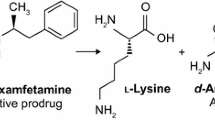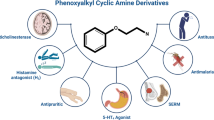Abstract.
Dopamine receptor agonists and antagonists have been extensively characterized in radioligand binding assays; only a limited number of laboratories have characterized them using a functional assay at multiple receptor subtypes. Experiments were designed to assess four agonists and seven antagonists at three cloned human dopamine receptors using agonist-stimulated [35S]GTPγS binding assays in membranes to quantify the initial cellular event following ligand/receptor interaction. In this model there is constitutive G protein activity (agonist-independent [35S]GTPγS binding) and potentially constitutive dopamine receptor activity. Thus, discrimination between silent antagonists, partial agonists and inverse agonists is theoretically possible. It was anticipated that distinctions could be made regarding efficacy of the seven receptor antagonists to provide insight regarding the therapeutic use of antipsychotic drugs.
In membranes prepared from CHO cells transfected to express high densities of human D2short, D4.2 or D4.7 receptors, the dopamine receptor agonists apomorphine, pergolide, quinelorane and quinpirole produced concentration-dependent increases in agonist-stimulated [35S]GTPγS binding. At the hD2short receptor, pergolide and apomorphine were essentially equipotent and more potent than quinelorane and quinpirole; all four agonists displayed similar efficacy at this receptor. At the hD4.2 and the hD4.7 receptors apomorphine was the most potent and pergolide the least efficacious of the four drugs. The ability (both potency and efficacy) of clozapine, haloperidol, olanzapine, quetiapine, risperidone, spiperone and ziprasidone to block apomorphine-stimulated [35S]GTPγS binding and alter basal [35S]GTPγS binding was also assessed. All of the antagonists inhibited apomorphine-stimulated [35S]GTPγS binding with potencies (K b values) similar to and in rank order consistent with their affinities reported in the literature using radioligand binding assays. Additionally, none of the antagonists altered basal, agonist-independent [35S]GTPγS binding, thus they behaved as pure, silent antagonists at D2short, D4.2 and D4.7 receptors under our conditions. In summary, the data suggest that therapeutic distinctions between typical and atypical antipsychotic drugs cannot be made based on their function at D2short, D4.2 and D4.7 subtypes of dopamine receptors.
Similar content being viewed by others
Author information
Authors and Affiliations
Additional information
Electronic Publication
Rights and permissions
About this article
Cite this article
Gilliland, S., Alper, R. Characterization of dopaminergic compounds at hD2short, hD4.2 and hD4.7 receptors in agonist-stimulated [35S]GTPγS binding assays. Naunyn-Schmied Arch Pharmacol 361, 498–504 (2000). https://doi.org/10.1007/s002100000224
Received:
Accepted:
Issue Date:
DOI: https://doi.org/10.1007/s002100000224




